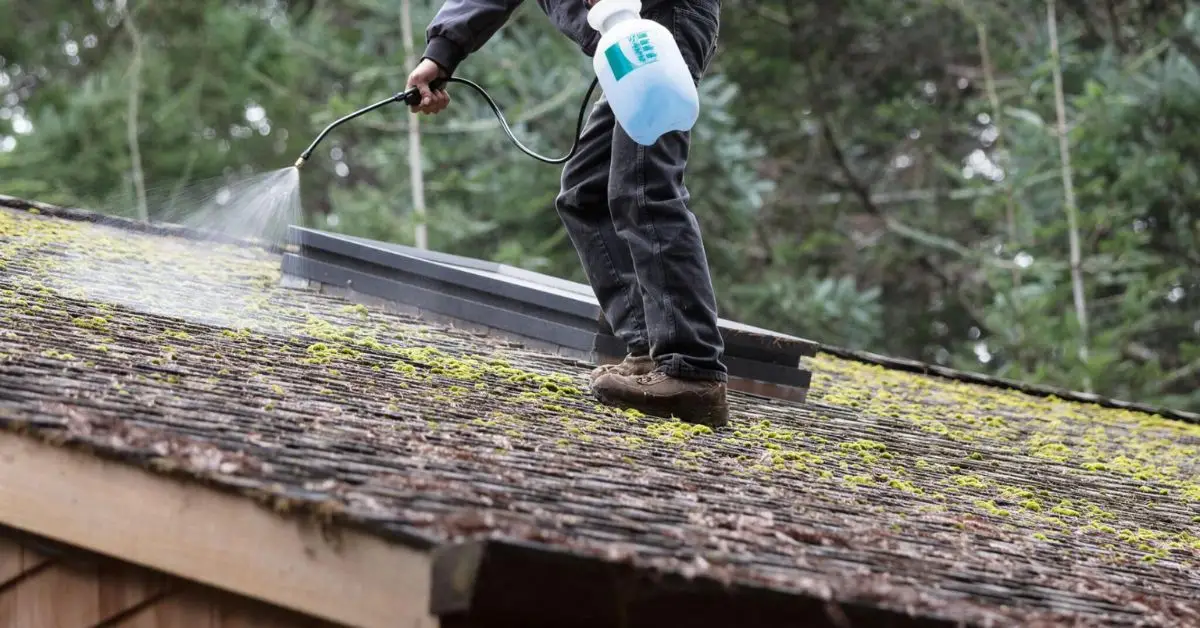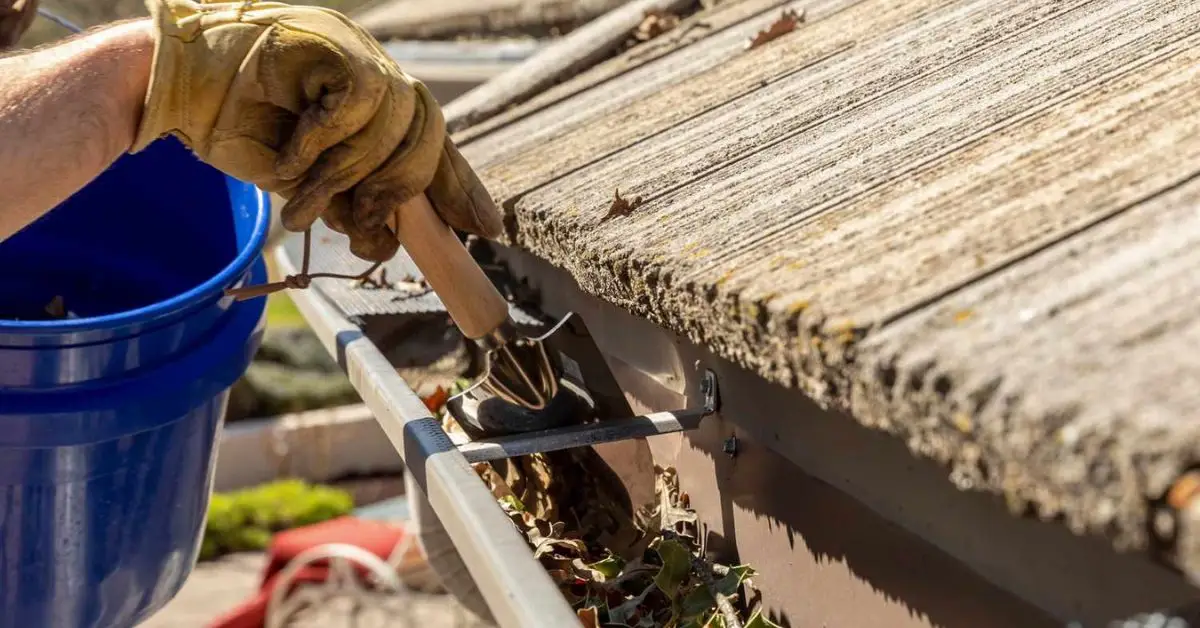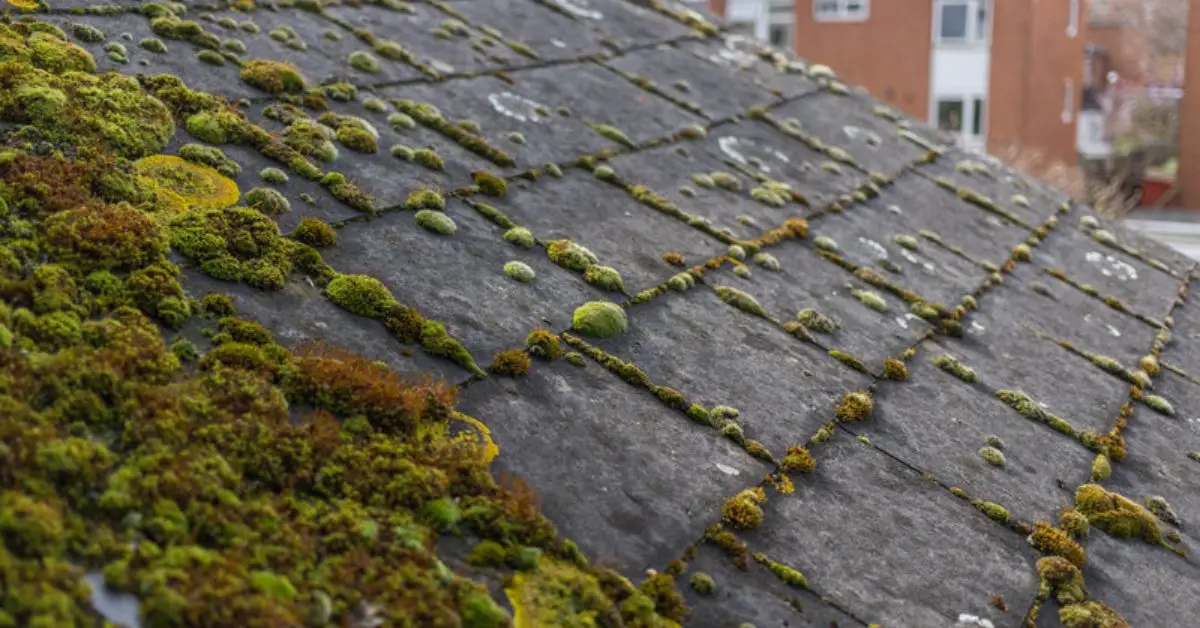Algae on Your Roof? Here Are 7 Fast Ways to Fix It
If you’ve noticed those green streaks or black spots creeping across your roof, you’re not alone. Roof algae are surprisingly common, especially in humid climates, and they can be more than just a cosmetic issue. While algae won’t necessarily destroy your roof right away, over time it can lead to costly damage, including the decay of shingles. But here’s the good news: you don’t have to hire an expensive contractor to fix it. In fact, you can remove algae from your roof safely and effectively with a few simple, DIY methods.
I know the idea of cleaning your roof might seem daunting, but trust me—it’s easier than you think. Whether you’re a seasoned DIYer or a complete beginner, I’ll walk you through seven simple, no-fuss ways to restore your roof without breaking the bank. Let’s dive into how you can handle this common home maintenance issue with ease and confidence.
1. Use a Baking Soda and Water Solution
If you’re looking for a simple, budget-friendly way to fight algae without introducing harsh chemicals, baking soda might just be your best friend. It’s a gentle yet effective cleaner that works wonders on algae growth, all while being completely non-toxic. Plus, it’s an ideal solution for homeowners who care about eco-friendly methods.
Why this works: Baking soda is a mild abrasive that helps lift algae off the roof without scratching or damaging the shingles. Unlike some harsher chemicals, baking soda won’t compromise the integrity of your roofing materials, making it a safe choice for most roofs.
Regular roof maintenance can go a long way in preventing algae buildup. Just like how you need to be vigilant about mold, which can sneak into your home unnoticed, you should also stay ahead of algae with simple preventative steps. For example, you can learn about common mistakes that invite mold and how to avoid them, which can also help prevent similar issues with your roof.
How to apply:
- Mix 1 cup of baking soda with 1 gallon of water.
- For best results, use a soft-bristled brush or spray bottle to apply the solution to the affected areas.
- Gently scrub or let it sit for 10–15 minutes before rinsing it off with water.
You’ll notice the algae starting to loosen and wash away without any need for heavy-duty equipment or toxic cleaners.
2. Apply a Vinegar and Water Mixture
Vinegar isn’t just for your kitchen; it’s also an excellent, all-natural solution for roof algae. This method is not only effective but also safe for most roofing materials, provided you use it correctly. Plus, it’s a great option if you’re looking for a chemical-free way to get your roof algae-free.

Why this works: Vinegar contains acetic acid, which breaks down algae and kills the spores, preventing future regrowth. It’s a perfect alternative for homeowners who want to avoid harsh chemicals while still tackling algae head-on.
How to apply:
- Mix equal parts vinegar and water in a spray bottle.
- Spray the solution directly onto the algae, covering the areas thoroughly.
- Let it sit for about 20 minutes before rinsing with water. For stubborn patches, you might need to repeat the process.
The best part? Not only will vinegar kill the algae, but it will also act as a natural repellent, helping to keep new algae from appearing anytime soon.
Vinegar is a perfect alternative for homeowners who want to avoid harsh chemicals while still tackling algae head-on. Similarly, dealing with other common household issues like plumbing leaks requires a proactive approach—here’s a guide on plumbing leak fixes that might come in handy for your home maintenance.
3. Try a Commercial Algae Cleaner
For some, DIY methods like vinegar and baking soda might not quite cut it—especially if the algae have been growing for some time or the infestation is particularly stubborn. That’s where commercial algae cleaners come in. They’re formulated to tackle more severe algae problems and offer lasting protection for your roof.
Why this works: Commercial algae cleaners are designed to be safe for most roofing materials, so you don’t have to worry about them damaging your shingles. These cleaners are typically more powerful and effective at removing algae, and they often come with built-in mold inhibitors to prevent future growth.
How to apply:
- Purchase a roof-safe algae cleaner (look for options specifically designed for your roof type).
- Follow the manufacturer’s instructions for application.
- Most products require you to spray it on and let it sit, then rinse off.
Tip: One trusted source for high-quality algae removers is Pressure Cleaning Guys, who detail methods to effectively clean your roof without causing damage.
Using a commercial cleaner is a quick fix, but remember—these solutions are often designed for long-term protection, so you’ll be preventing more algae from returning in the future.
For some, DIY methods like vinegar and baking soda might not quite cut it—especially if the algae have been growing for some time or the infestation is particularly stubborn. That’s where commercial algae cleaners come in. For a more serious cleaning task, like removing hidden germs in your kitchen, check out this article that explains how to tackle germ hotspots effectively.
4. Use Pressure Washing (With Caution)
Pressure washing can seem like the quick fix to remove algae, but it’s a method that requires careful handling. If used incorrectly, a pressure washer can damage your shingles, leading to more problems down the road. That’s why understanding how to use it safely is key to success.
Why this works: Pressure washing is effective at quickly removing algae, especially when the growth is widespread. However, it can also strip away protective granules on shingles if done improperly. It’s all about finding the right balance between power and precision.
How to apply:
- Set the pressure to low: Always start with a lower pressure setting to avoid damaging your roof. Too much pressure can force water under the shingles, causing leaks and even lifting them.
- Work with the grain: Aim the nozzle along the direction of the roof’s grain, never directly up or down. This prevents water from getting trapped beneath the shingles.
- Use a wide-angle nozzle: This helps distribute the pressure more evenly, making it gentler on the roof.
Important Tip: Pressure washing is best for larger roofs or areas with deep algae infestations. Just be sure to follow the correct techniques to avoid causing damage.
Want more tips on how to safely use pressure washing for algae removal? This Old House offers a fantastic, detailed guide on roof cleaning techniques you can check out here.
5. Install Zinc or Copper Strips
If you want to avoid the hassle of repeated algae cleanings, installing zinc or copper strips along the ridge of your roof is a long-term solution. These strips slowly release ions that prevent algae from growing in the first place.
Why this works: Zinc and copper strips are highly effective because the ions they release kill algae and prevent regrowth. They don’t just clean your roof; they actively fight algae over time, so you don’t have to worry about frequent maintenance.
How to apply:
- Install along the ridge of the roof: Place the strips where the roof meets the ridge, ensuring they’re securely attached.
- Simple to install: Particularly on steep roofs, this solution is relatively easy to install and doesn’t require much maintenance after that.
By adding these strips to your roof, you’ll ensure that algae doesn’t have a chance to take root in the first place. It’s a preventive measure that’ll save you time and effort in the long run.
6. Use a Soft-Bristled Brush for Manual Scrubbing
Sometimes, the most effective method for algae removal is also the simplest. A soft-bristled brush allows you to scrub away algae without causing damage to your roof. While it may take a little elbow grease, this tried-and-tested technique can tackle localized algae growth, leaving your roof looking fresh without the need for chemicals or heavy equipment.
Why this works: Gentle manual scrubbing ensures you don’t damage your shingles, unlike harsher methods that might lift or crack the materials. It’s an effective option for smaller, more targeted algae infestations.
How to apply:
- Use a soft-bristled brush: Gently scrub the algae away, being careful not to push too hard.
- Work in sections: Focus on small areas at a time to ensure thorough cleaning.
- Rinse after scrubbing: Use a hose to rinse off any leftover algae and debris once you’re done.
This method is perfect for homeowners who prefer a hands-on approach and want a safe, controlled way to remove algae without risking any damage to their roof.
7. Clean Your Gutters Regularly

One of the easiest yet most overlooked methods to prevent algae growth on your roof is keeping your gutters clean. Clogged gutters trap water, which can lead to excess moisture on the roof, providing the perfect breeding ground for algae. This simple maintenance step can save you from bigger issues down the road.
Why this works: When gutters are clogged, water can’t flow properly, and it begins to collect, pooling on your roof. This moisture allows algae to thrive and spread.
How to apply:
- Clear gutters regularly: Make a habit of cleaning your gutters at least twice a year—more if you live in a leafy area.
- Check downspouts: Ensure water flows freely through your gutters and downspouts to prevent any blockages.
Regular gutter cleaning not only helps prevent algae growth but also protects your roof from more serious damage, such as leaks and wood rot.
Things to Avoid When Removing Algae from Your Roof
When you’re tackling roof algae, it’s important to avoid a few common mistakes that can end up costing you more than just a cleaning session. Using improper techniques or harsh chemicals can lead to roof damage, which could require expensive repairs. Here are some key things to steer clear of:
What to avoid:
- High-pressure washers: While tempting, using a high-pressure setting can damage your shingles by forcing water under them or stripping off protective granules.
- Harsh chemicals like bleach: Bleach can damage your roof’s surface and harm the environment. It’s better to use gentler, non-toxic alternatives that won’t hurt your shingles or the surrounding landscape.
By avoiding these mistakes, you can safely and effectively remove algae without causing further harm to your roof.
How to Prevent Algae Growth on Your Roof in the Future

It’s always better to be proactive than reactive when it comes to roof maintenance. Once you’ve tackled the algae issue, take a few simple steps to prevent it from coming back. Regular roof upkeep can save you from having to repeat the algae removal process again.
Preventative steps:
- Regular maintenance: Keeping your roof clean and well-maintained is the best way to ensure algae doesn’t return. Regular inspections help catch early signs of algae growth or moisture buildup.
- Proper ventilation: Ensure that your attic and roof are well-ventilated. Good airflow helps keep the roof dry, reducing the moisture that algae needs to thrive.
- Algae-resistant shingles: If you’re replacing your roof, consider using algae-resistant shingles, which are designed to prevent future growth.
For a more in-depth look at roof cleaning and algae prevention, Roof Crafters provides excellent resources on how to remove mold and algae effectively.
By installing copper or zinc strips along your roof’s ridge, you can actively prevent algae from taking root again, keeping your roof looking pristine and safe for years.
Conclusion: Keep Your Roof Clean and Algae-Free with These Simple Steps
In conclusion, removing algae from your roof doesn’t have to be a complicated or expensive task. By following these simple, DIY steps—whether using baking soda, vinegar, or pressure washing—you can easily take care of algae and keep your roof in top shape. Remember, regular maintenance like gutter cleaning and the installation of zinc or copper strips can also prevent future growth, saving you time and money in the long run.
The best part? You don’t need to call a professional to handle this. With a little effort and the right tools, your roof can stay algae-free and looking great year-round.
What’s your experience with algae removal? Have you tried any of these methods, or do you have a different technique that worked for you? Share your thoughts and tips in the comments below!
For more home improvement tips and DIY guides, be sure to visit Build Like New for all the resources you need to keep your home in tip-top shape.


